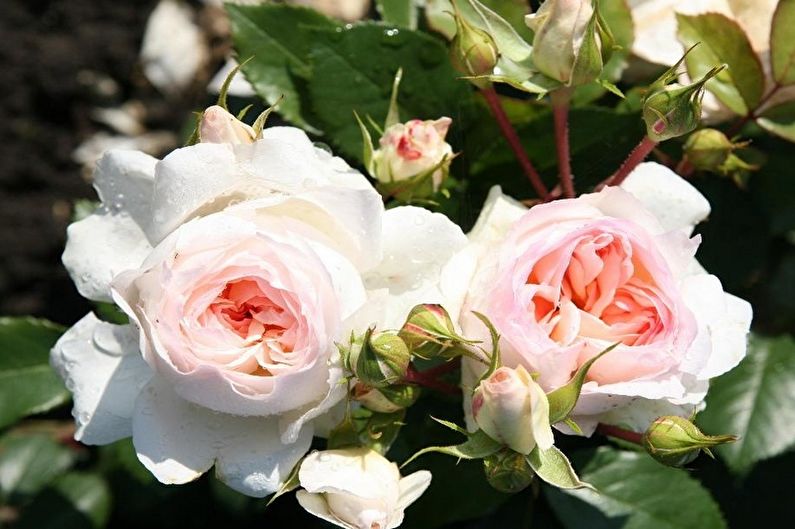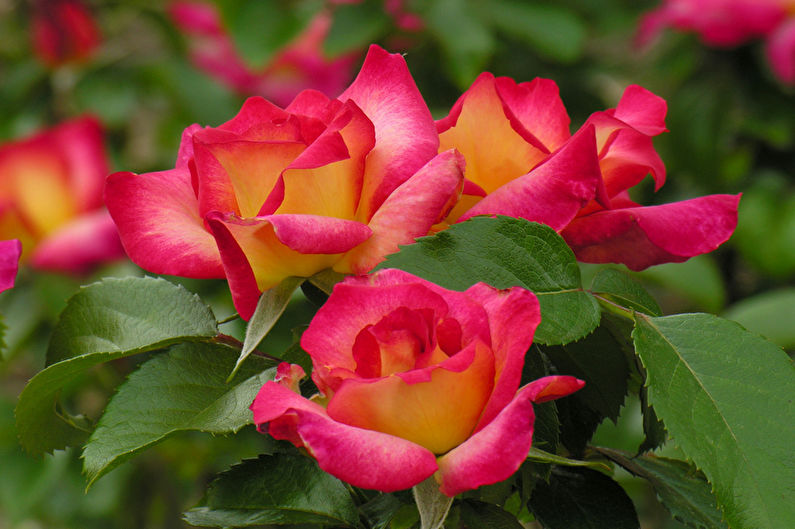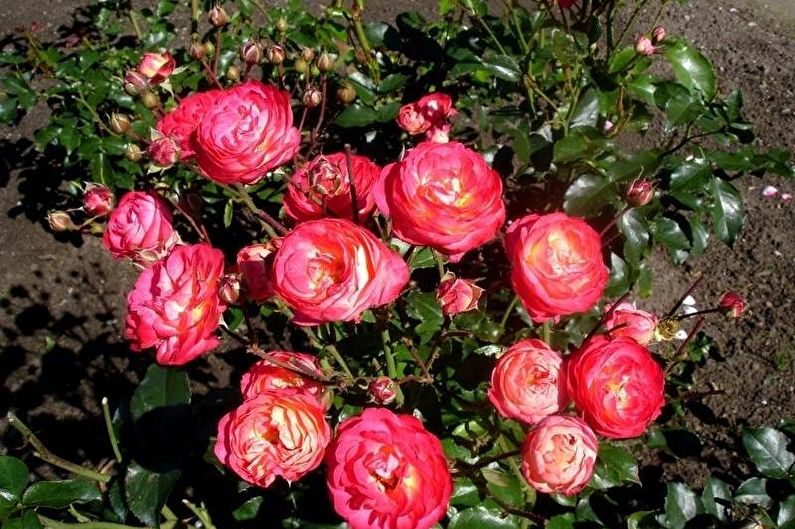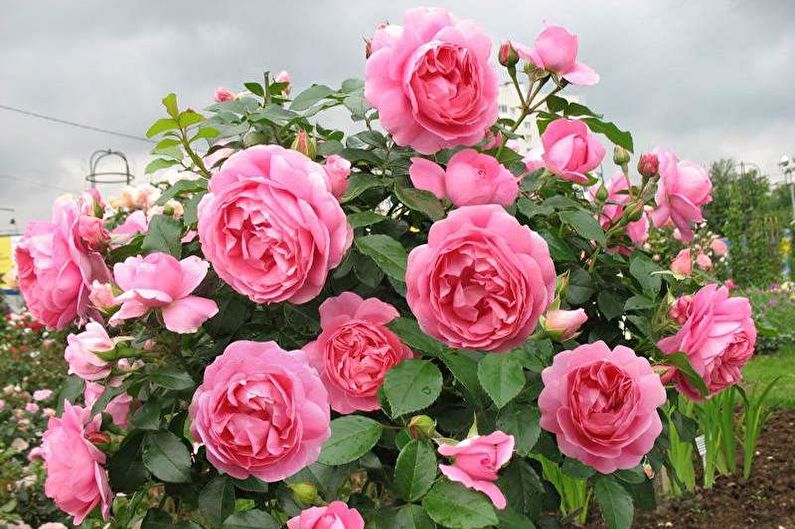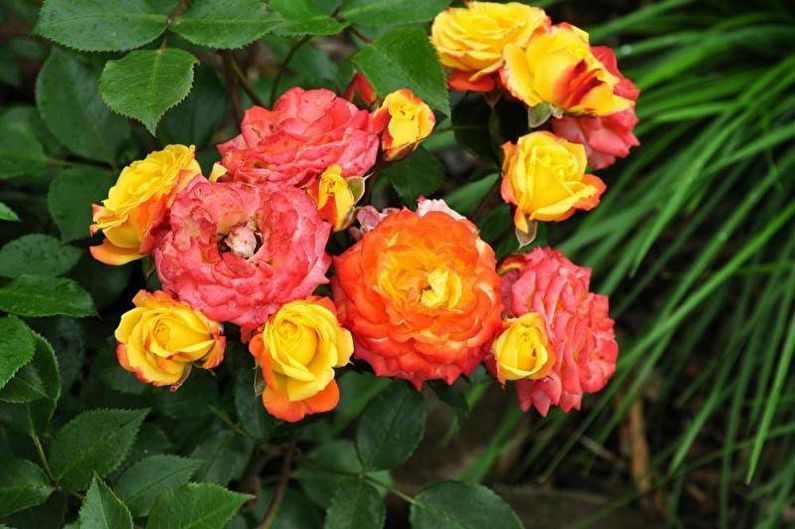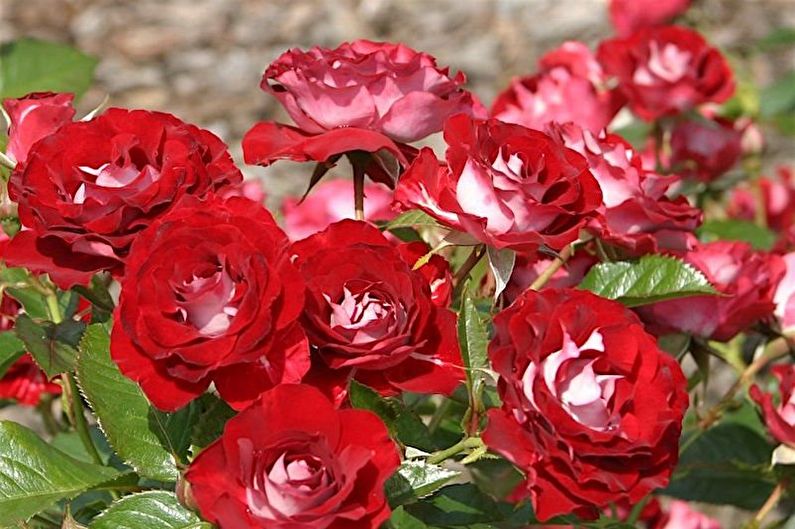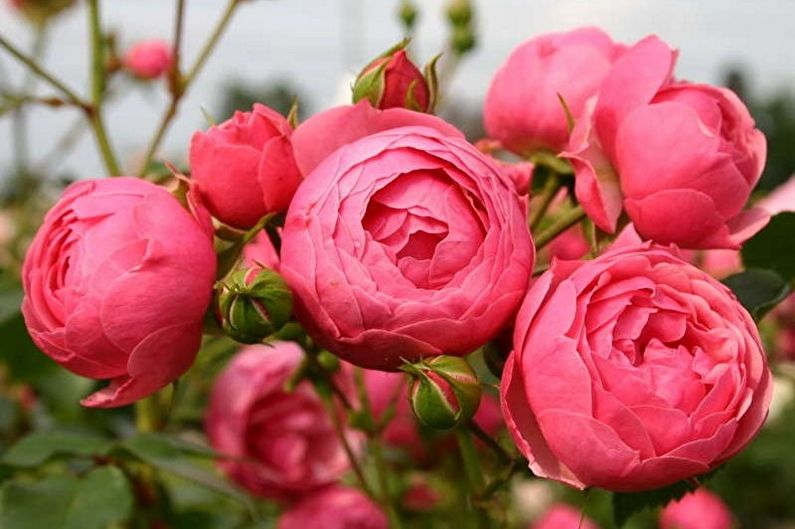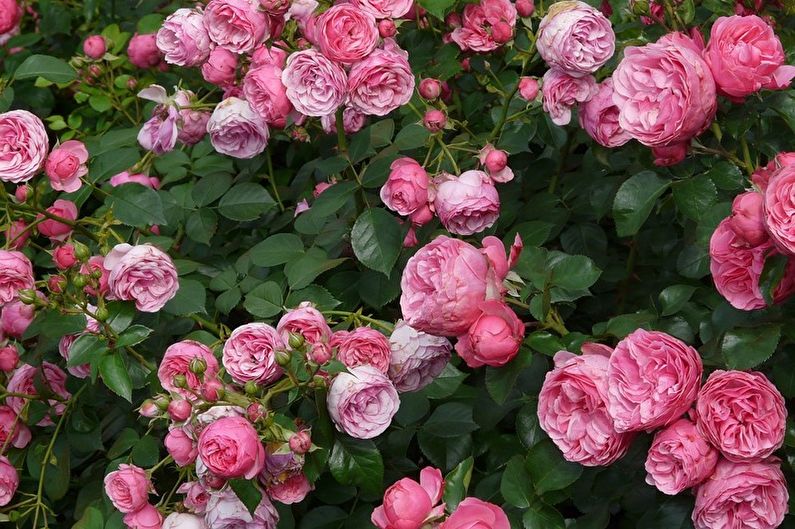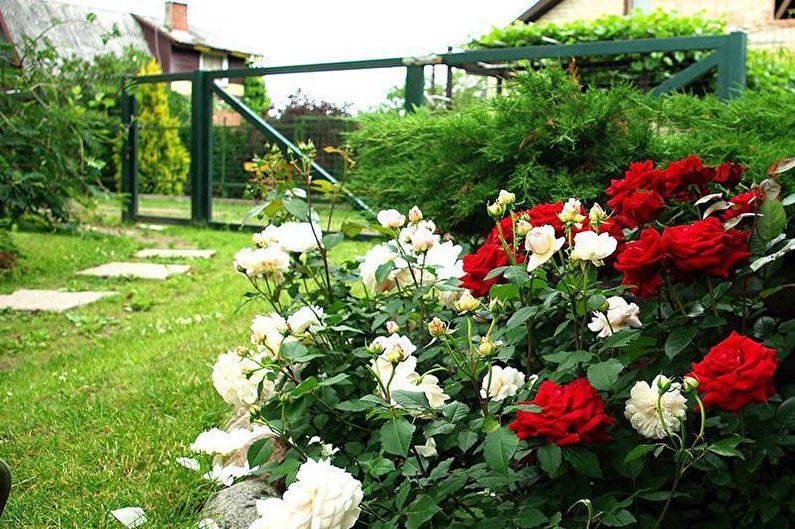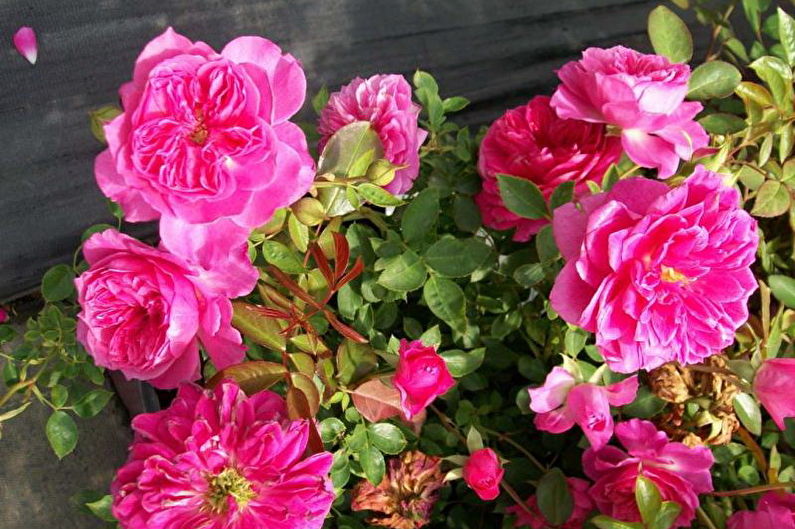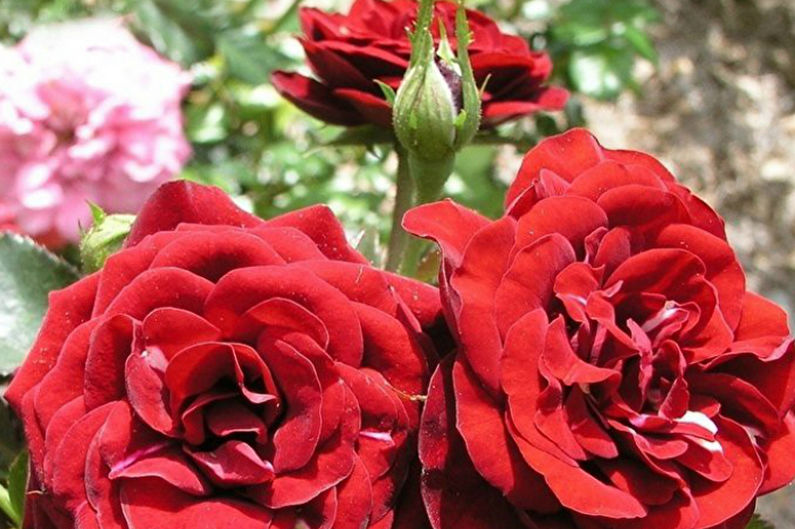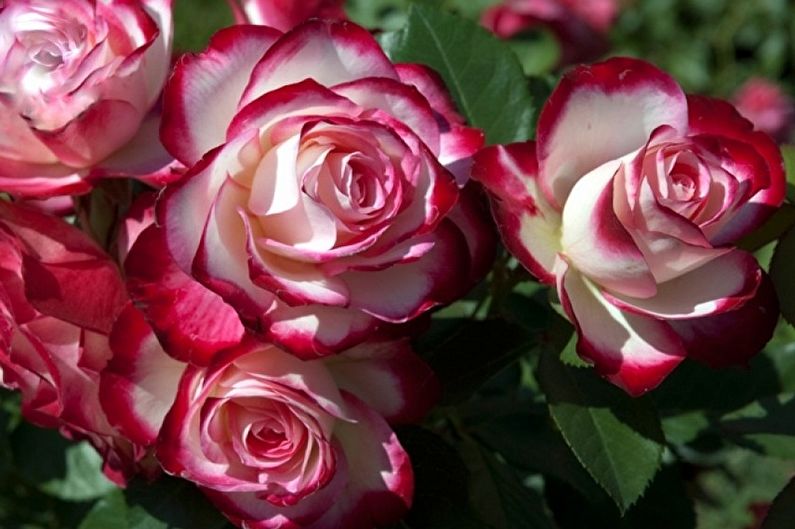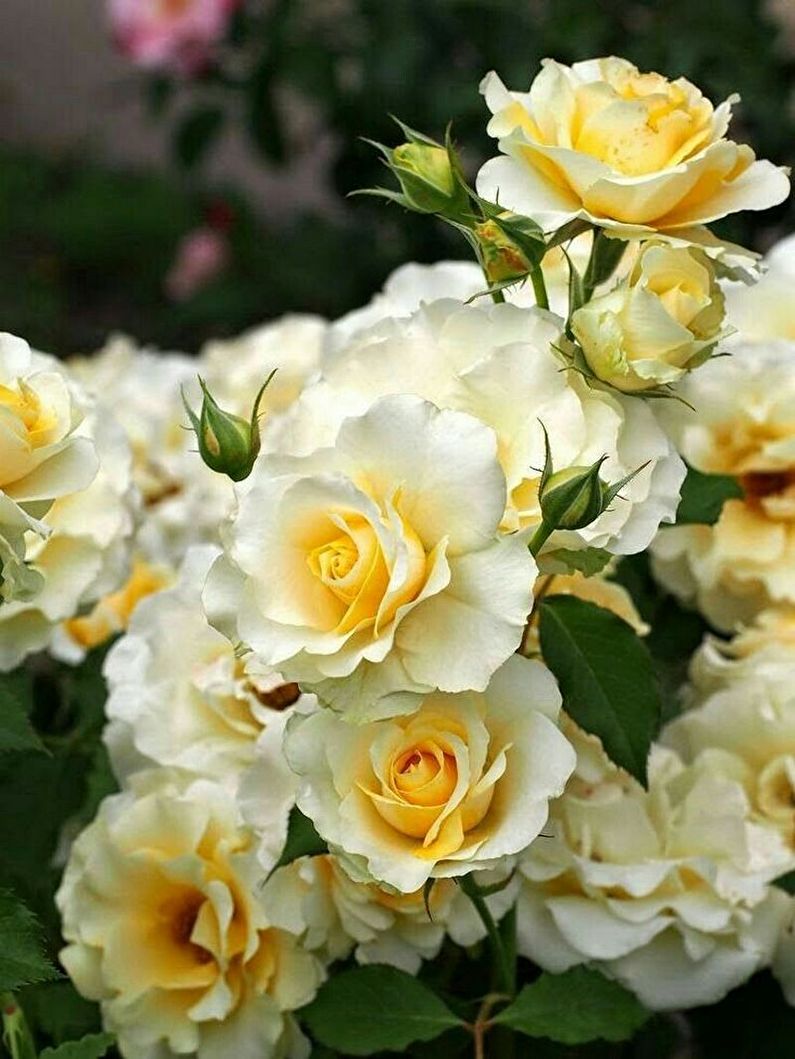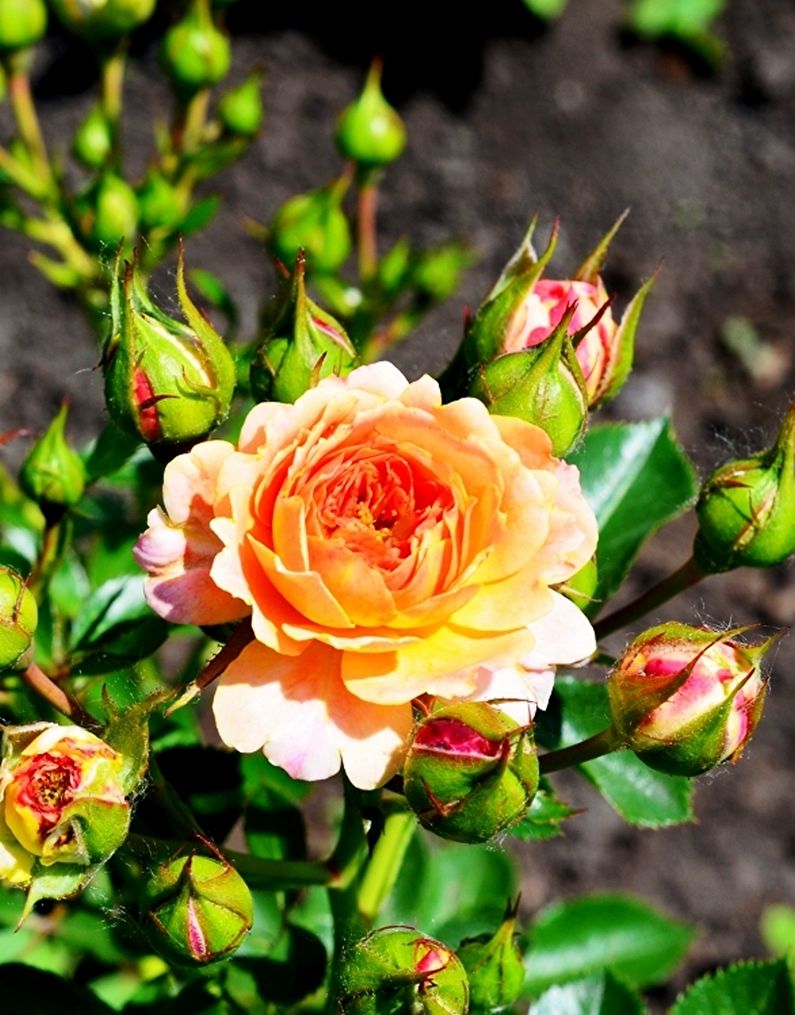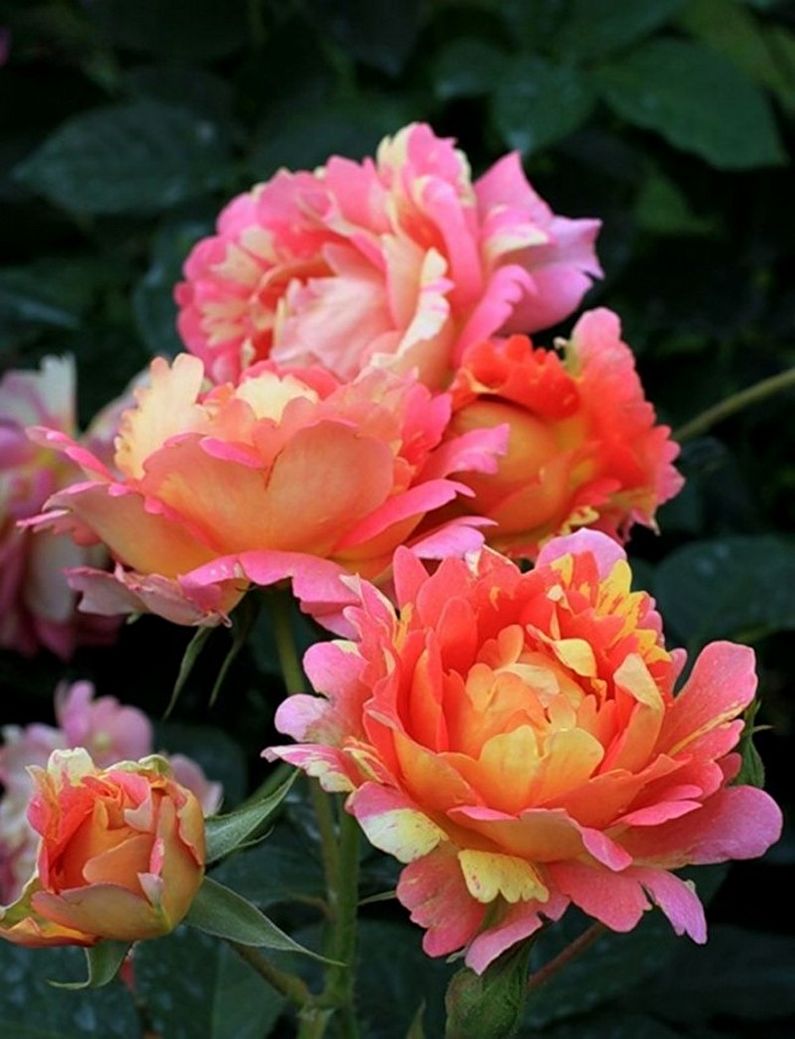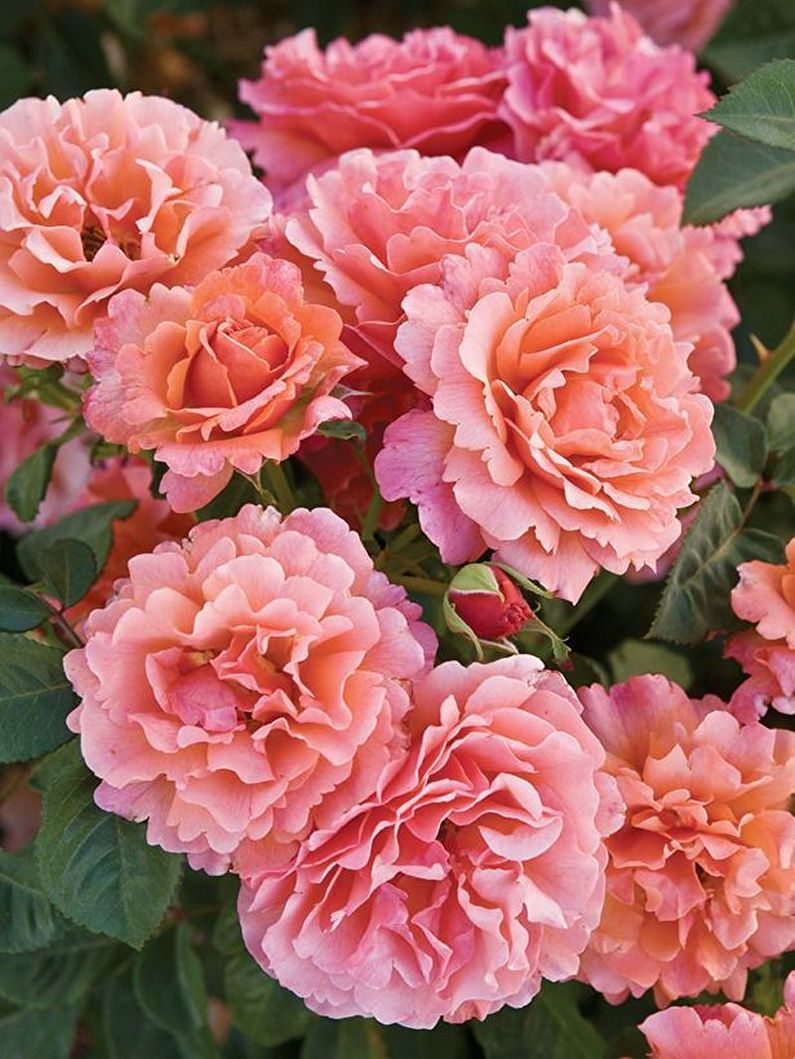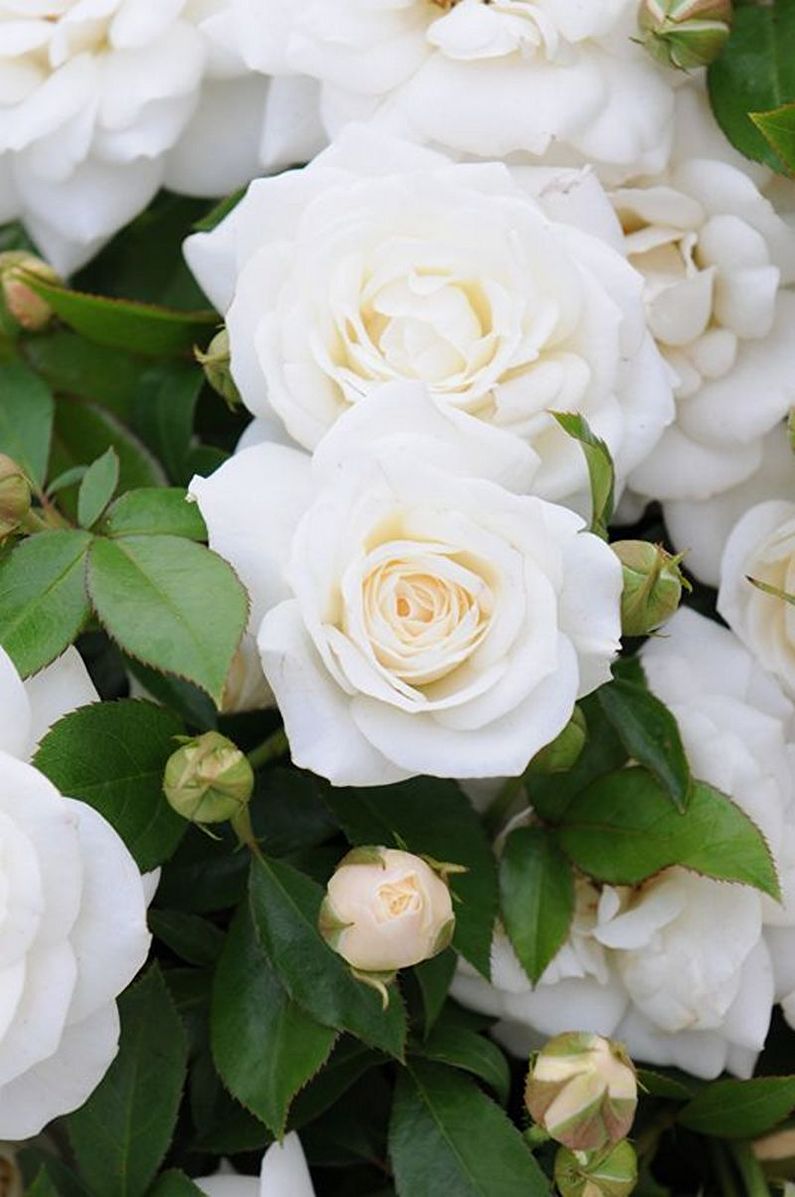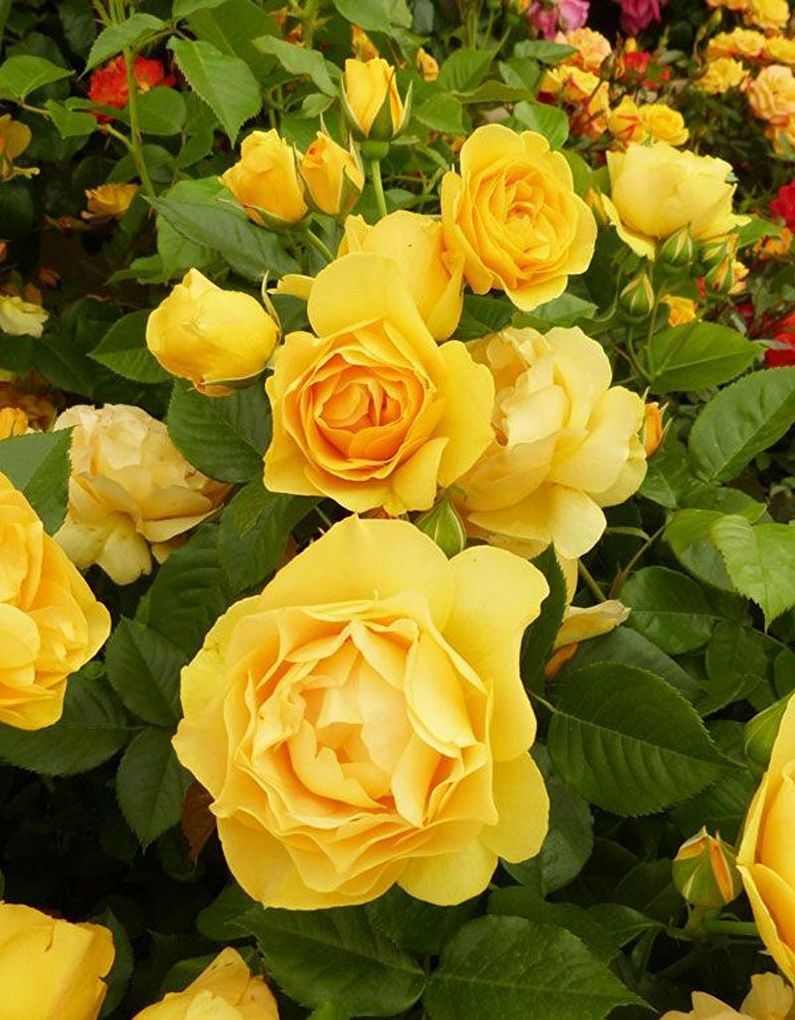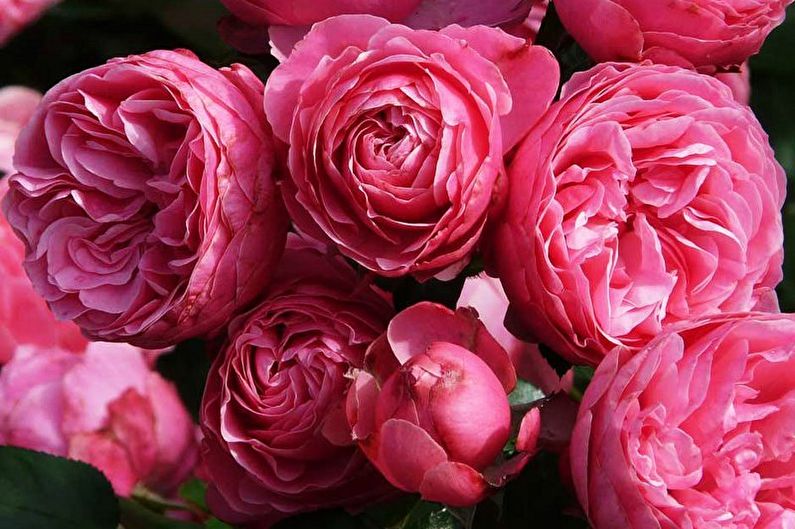
Graceful and decorative rose Floribunda is actively used in landscape design and in the design of garden plots. The secret to popularity is simple: resistance to frost, good immunity, unpretentiousness, a long flowering period. Breeders managed to get an interesting family, crossing different varieties for years. As a result, a colorful and elegant rose of Floribunda came out, which even novice growers can handle.
General characteristics of the flower
Unusual rose reaches a meter in height. But there are miniature thirty-centimeter varieties. A feature of the family is intense colorful flowering. At the top of the shoots, not a single flower is formed, but a whole bouquet. Different subspecies are grown as a garden shrub or a house plant in a flowerpot. In addition, they are cut for bouquets and decorative compositions.
The largest flowers are ten centimeters, but usually they are smaller. In texture, there are both simple and varying degrees of terry. The flowering period begins at the height of summer. An important plus for decorative seedlings is that it blooms in several stages, in waves. You can admire the Floribunda rose up to significant frosts.
The origins of the species go to the activities of the Danish breeder Poulsen. It was he who began to cross hybrid tea and polyanthus subspecies, and succeeded by the mid-twenties. The very definition of “floribunda” is literally translated as “abundantly flowering”. This directly indicates the main feature of the group. The official birth of the family is considered to be 1952.
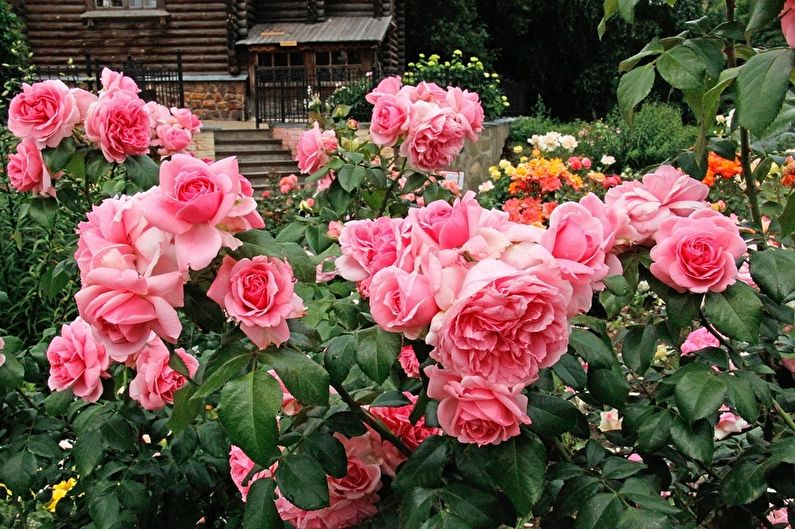
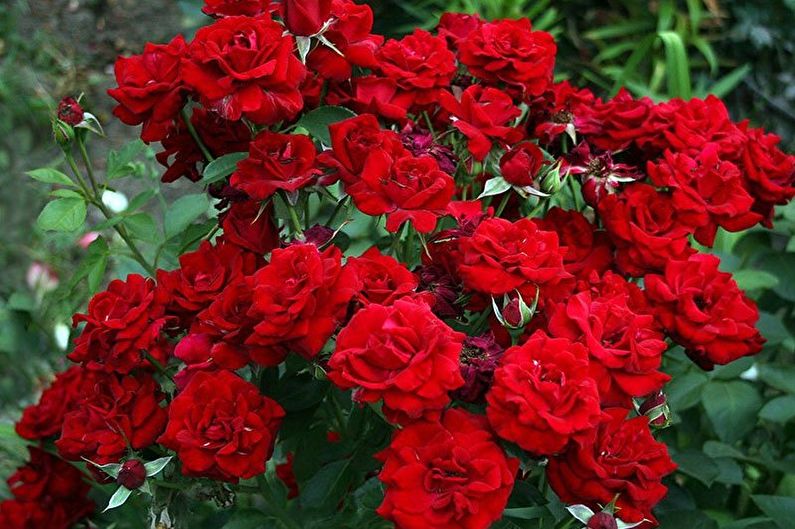

Types of Floribunda roses
The number of decorative varieties and subspecies is so vast and diverse that it has long been impossible to properly calculate them. Breeders are breeding new and interesting varieties. They differ among themselves mainly in their decorative qualities, colors, and flowering time.
Carte Blanche
High grade, which is famous for its decorative foliage and small double terry snow-white flowers. Carte Blanche actively blooms until fall, is almost not sick and is not afraid of parasites. It is also valuable in that it is extremely rarely affected by a fungus. Even seed growers can handle such seedlings.
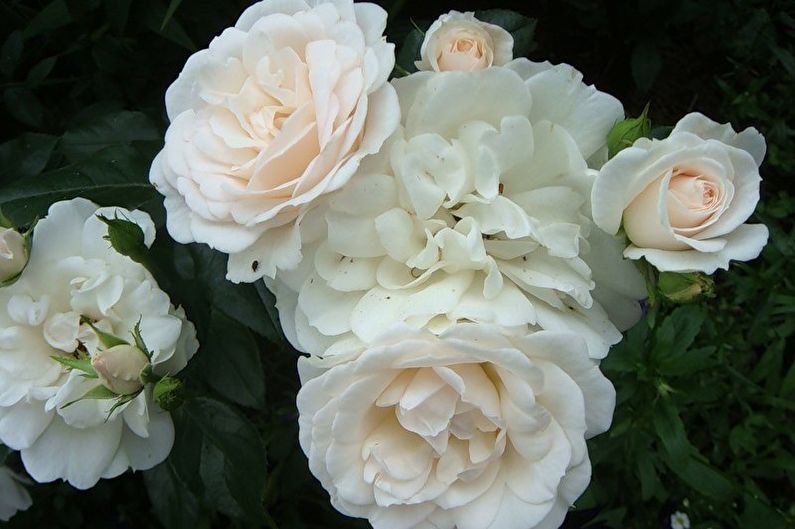
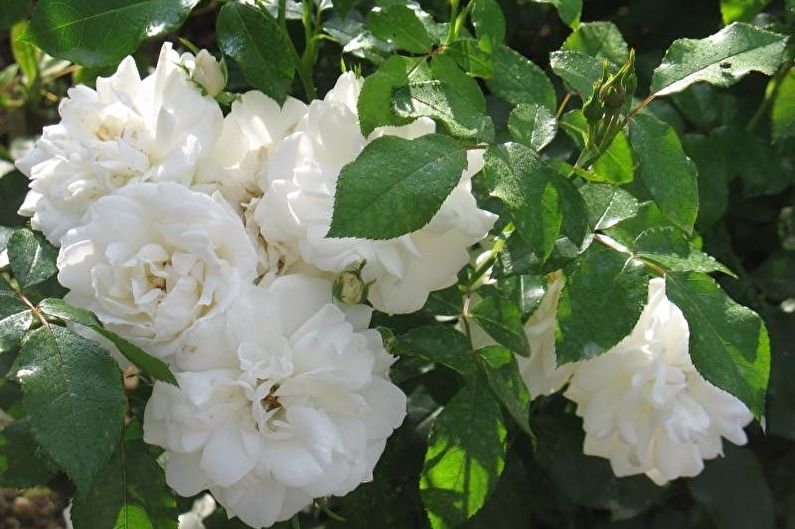
Bluewender
A sprawling bush grows to 65 cm. The dark green shiny foliage serves as an excellent contrasting backdrop for spectacular terry pink buds. Due to its striking appearance, an unpretentious variety is often planted in the foreground when drawing up landscape compositions.

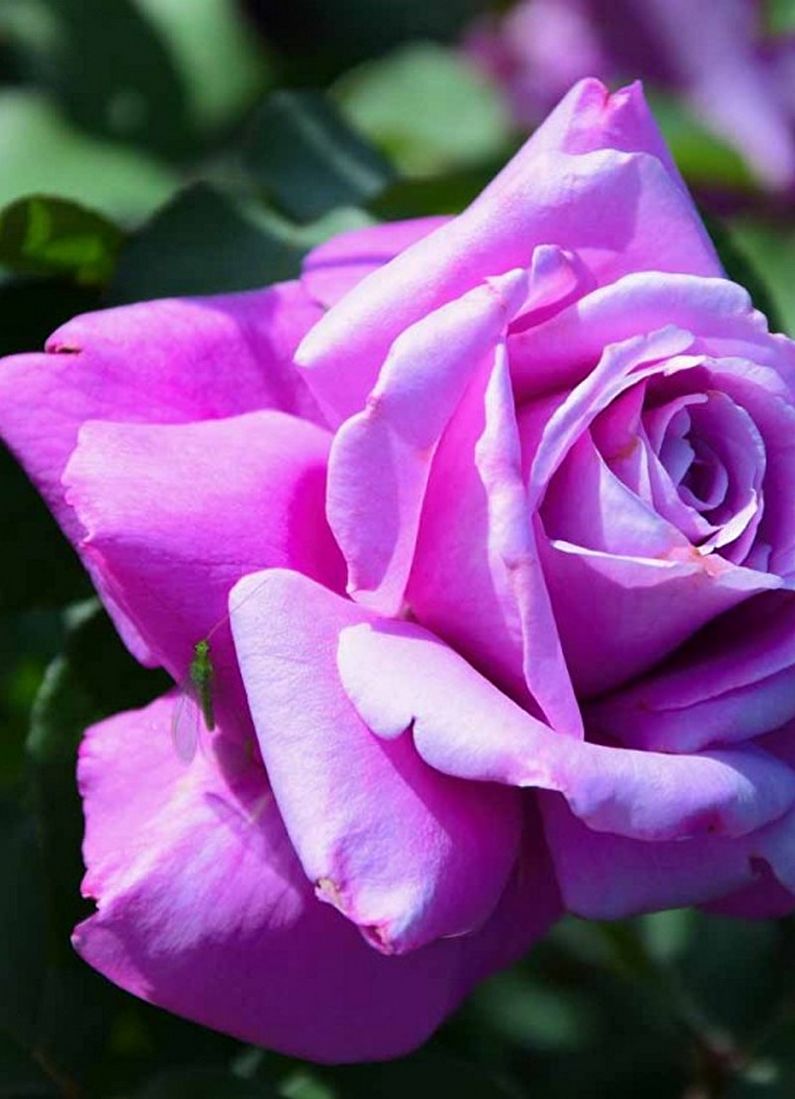
Leonardo da Vinci
Hardy decorative variety is almost not afraid of the wind and is resistant even to heavy rain. Large ten-centimeter flowers adorn a dense compact bush. Sometimes this variety grows above a meter. Leathery and dense leaves emphasize the tenderness of flowering. Keep in mind that Leonardo da Vinci requires special care, but is resistant to frost and most diseases.
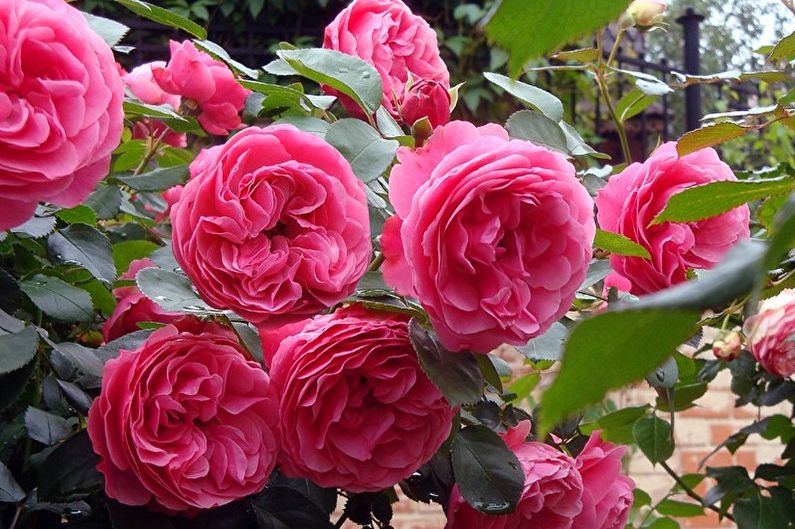
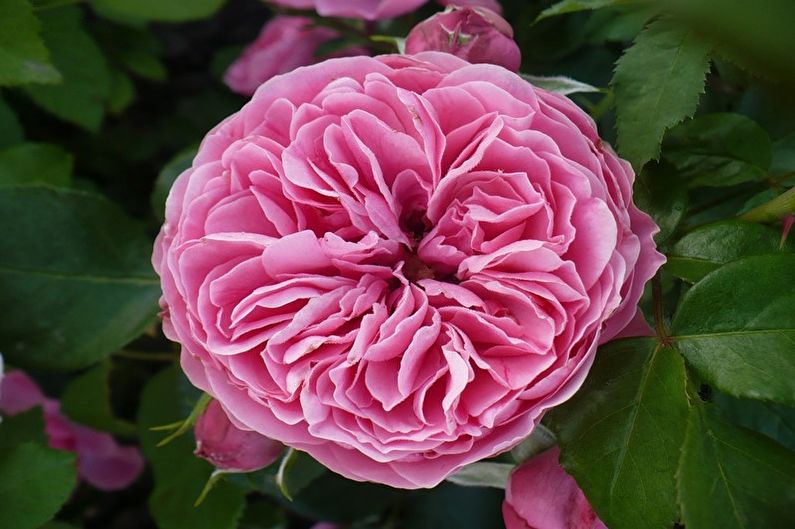
Galaxy
A tall eight-centimeter bush is covered with unusual two-color yellow-red flowers that persist throughout the flowering season. Another feature is the aroma of linseed oil, which exude unopened buds.

Frisia
Compact, dense and resilient bushes grow to 75 cm. They are covered with dense terry yellow flowers of a saturated shade. One of the valuable decorative qualities is resistance to the bright sun. Roses do not fade and are not afraid of frost. Frisia blooms right up to frost.
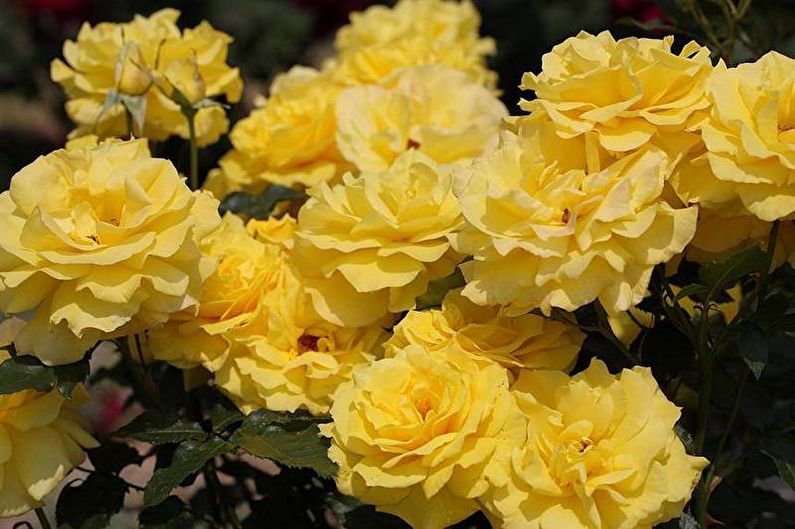
Maria Theresa
The graceful shrub is strewn with small quartile-shaped, quartile-shaped flowers in inflorescences-umbrellas. They are densely terry, of a delicate pink hue, stand out brightly on shiny dark leaves.This is a wide and vigorous variety that blooms from the beginning of summer until mid-autumn. In everyday life, it is resistant to fungus, including the most common manifestations: powdery mildew or black spotting.
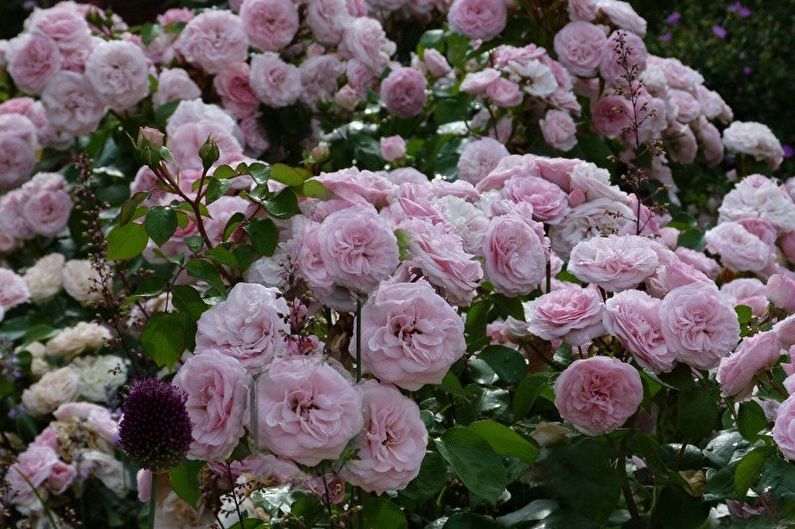

Stromboli
A tall, straight eighty-centimeter shrub is strewn with dark glossy leaves. Large flowers with corrugated velvet petals are combined in inflorescences of 3-5, and sometimes 10 buds. The bowl-shaped form and saturated red color even more emphasizes their beauty. The aroma is mild.
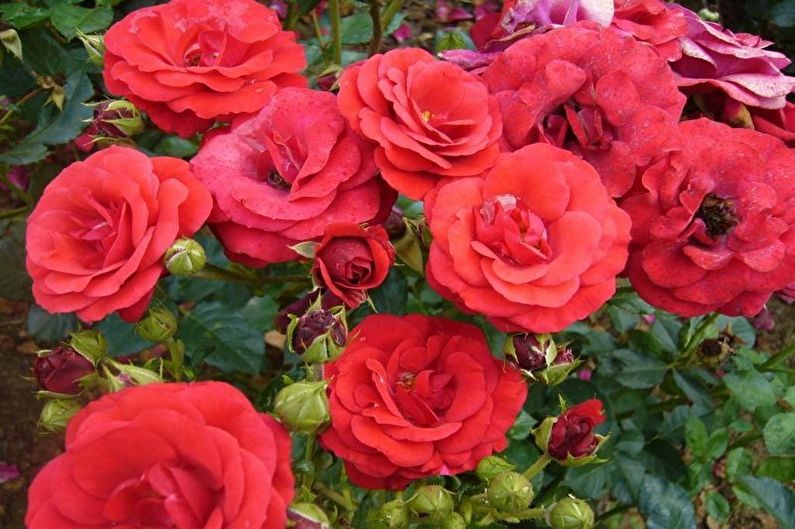
Lilly Marlene
Unpretentious variety successfully grows almost all over the world, regardless of climate and geography. It is ideal for greenhouses. An interesting feature is the bronze ebb of foliage. The flowers are fire-red, medium diameter, with a mild terry texture and a subtle smell.
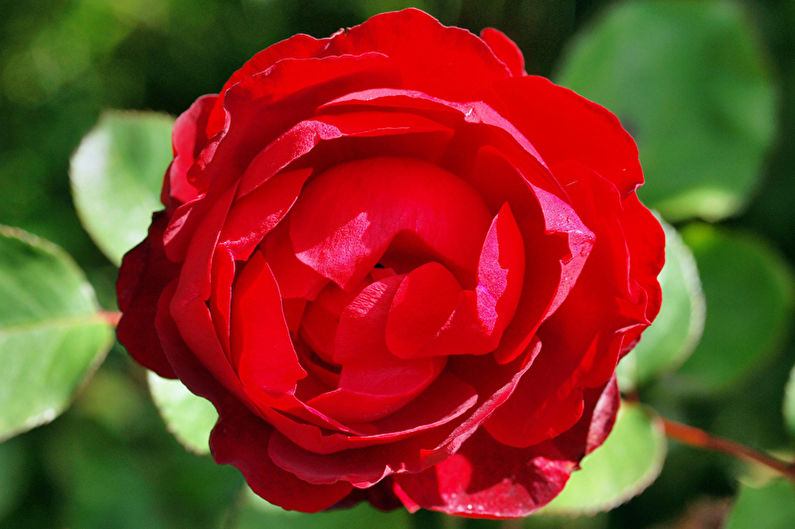
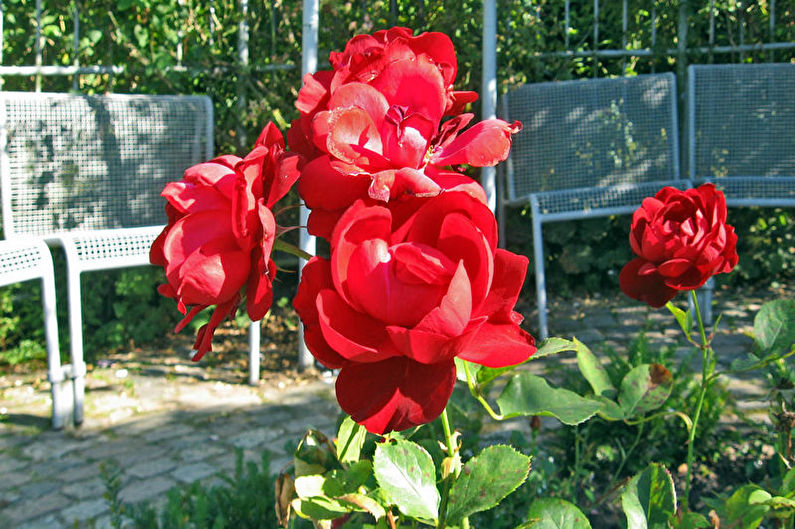
Niccolo Paganini
A powerful decorative shrub with large inflorescences closest to classic roses due to its deep red color. Seedlings have good immunity and resistance to diseases or pests. And when making bouquets, this is one of the most popular varieties.
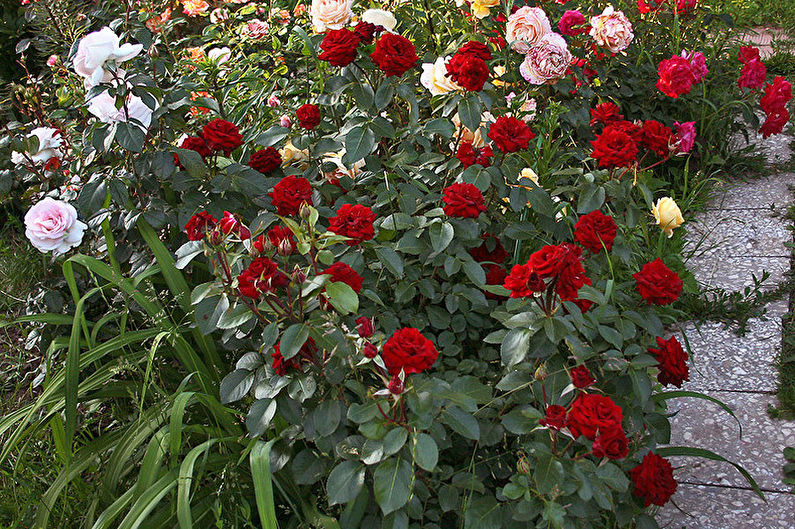
Sangria
This is a relatively new subspecies with unusual bunk raspberry flowers. Saturation and color intensity are maintained until the end of flowering. Sangria grows in almost any environment. For care it is enough to control the humidity, and once every 3-5 years to conduct anti-aging pruning.
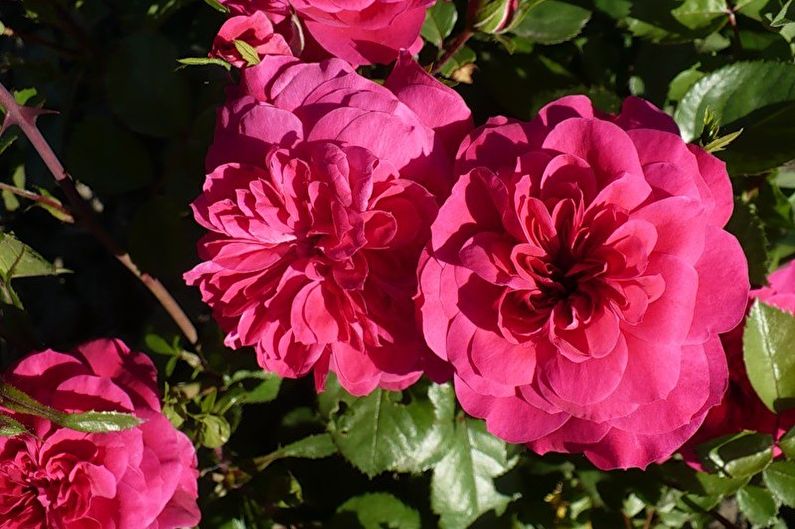
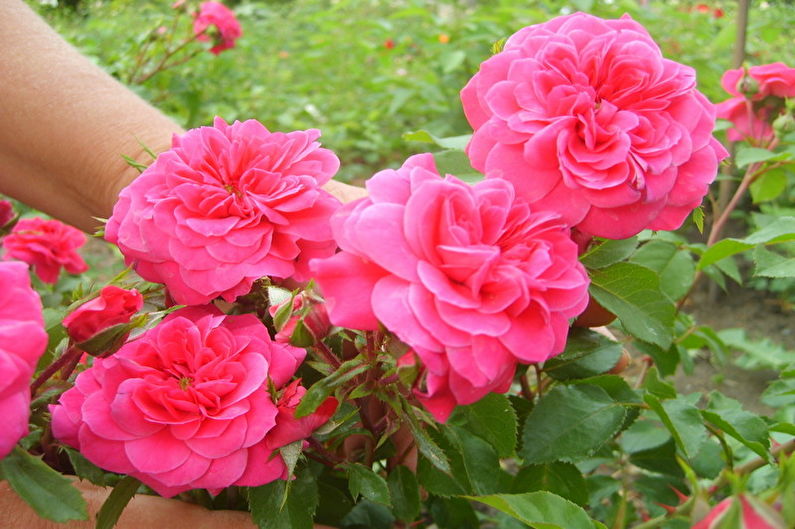
Blue Baju
The chip of this type is the original coloring. The buds have an unusual lilac-blue hue. Although it is one of the most demanding and sensitive to external conditions varieties, it is very appreciated precisely due to its unusual decorativeness.

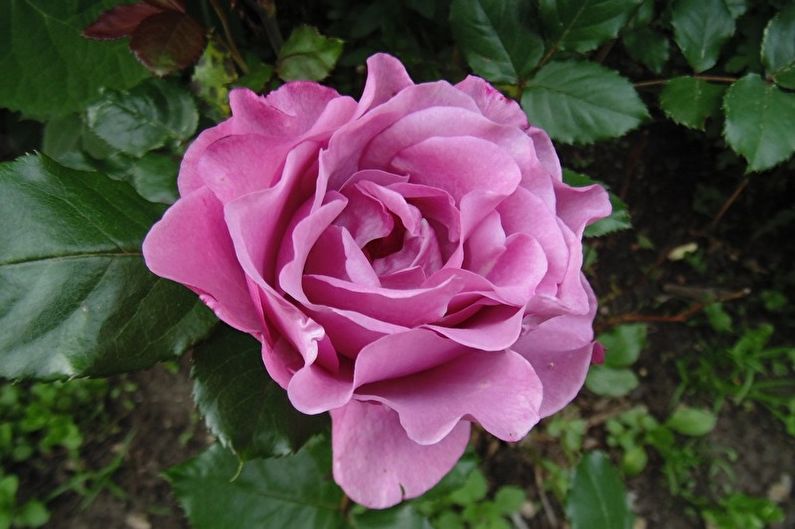
New varieties
Breeders are constantly introducing new hybrid types. Among the interesting novelties is the spray rose. Each inflorescence resembles a separate bouquet. Another popular group is the mini-flora. It is miniature and elegant, differs from others in the form of growth: not inflorescences grow on the branches, but shoots with them.


Floribunda Rose Care
The amazing rose of Floribunda loves the sun and warmth. She is undemanding. It’s enough to hide it from drafts and wind. To prepare the soil, mix it in advance with sand, peat, humus. You can add crushed clay, a portion of bone meal and some superphosphates. To preserve moisture and temperature conditions, the soil is mulched with sawdust.
The secret of long flowering is abundant regular watering. Too hot summer in the evenings, spray the flower with warm water. If the rose does not have enough moisture, it drops the buds in order to preserve its own.
Top dressing is carried out throughout the season. It's not hard. It is enough to observe the regime and alternate organics and mineral impurities. This is necessary for the health of the flower, as well as to increase the intensity and prolong flowering.
Decorative shrubs need to be formed, and periodically also rejuvenated. For mallow, repeat the procedure in spring and autumn. Before the leaves appear, the main pruning is carried out, stimulating the development of new shoots. Autumn pruning is a mandatory step in preparing a rose for winter.
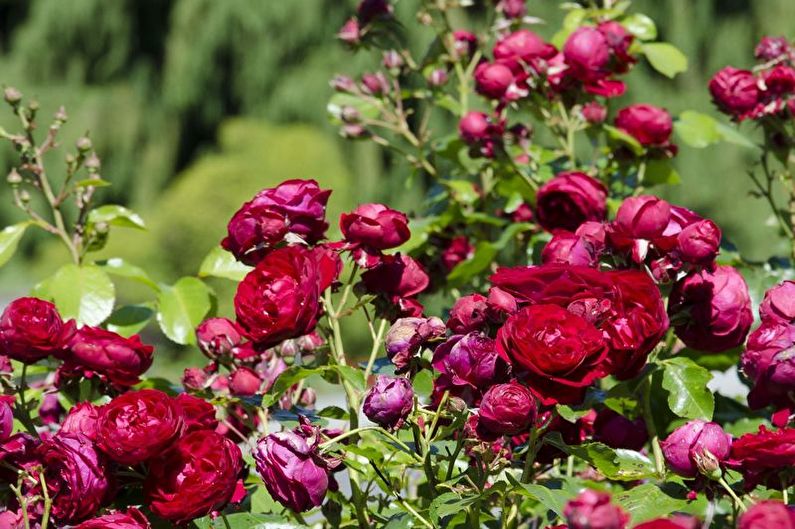
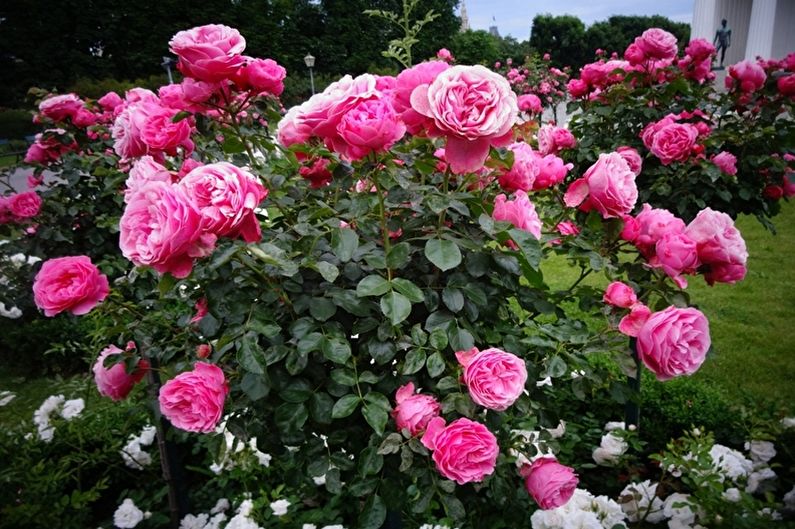
Transplantation and reproduction
Rose Floribunda on the farm is propagated by cuttings perfectly:
1) At an acute angle, cut off the woody shoots from 8 cm above the kidney;
2) Remove the leaves and spikes from below;
3) Treat the section with hormonal drugs;
4) Half set the cuttings in the holes;
5) Observe an interval of 20-30 cm;
6) Cover with a film until it takes root;
7) Periodically ventilate, water, feed the seedlings and carefully loosen the soil.
Young shoots take root and develop up to 2 years. Be sure to hide them for the winter. After that, the bushes can be planted in a new stable place.
Some varieties reproduce well by grafting, but from the seeds of Floribunda’s rose they hardly grow at home. This is a long time, and in addition - it is difficult to maintain the characteristic species features.

Pest and Disease Control
Most varieties of Floribunda roses are resistant to major diseases, fungi and parasites.It is enough to remove damaged fragments and weeds on time, to avoid stagnation of water, to nourish and feed plants.
An important nuance is protection against frost. Decorative varieties survive the winter well, but for this they need to be prepared:
- Completely remove the remaining leaves with inflorescences;
- Shorten bushes to 45 cm;
- Gently spud with earth another 30 cm;
- Cover with spruce branches or leaves;
- On top you can cover the Floribunda rose with a non-woven fabric.
So, and also under the snow cover, she is not afraid of any cold weather.
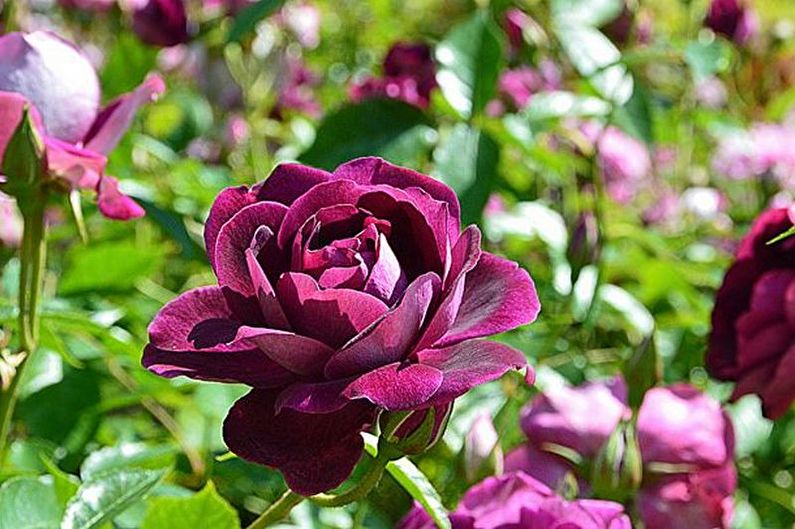
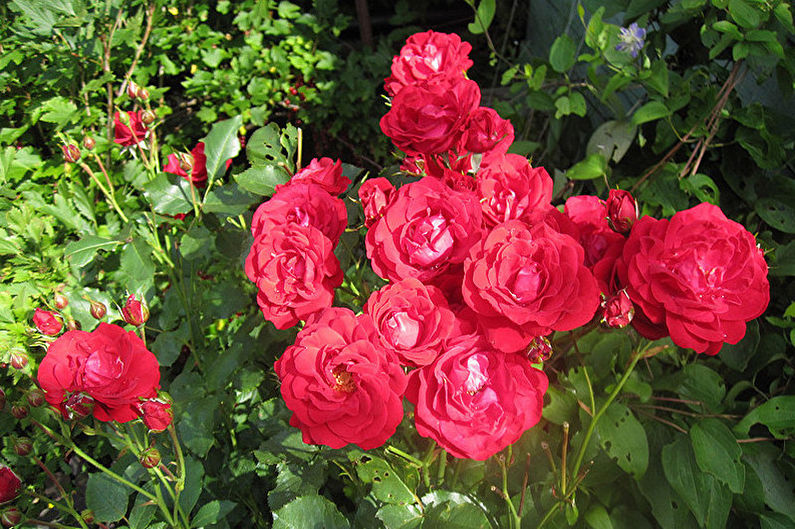
Rose Floribunda - photo
Rose Floribunda is a very interesting and unusual flower. To understand how to reveal its best qualities in all its glory, see our selection of photos. Enjoy watching!
